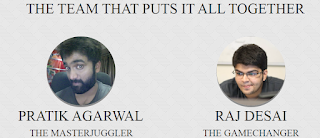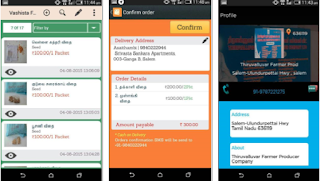As someone who loves her seafood, the fact that the MS Swaminathan Research Foundation (MSSRF) is doing some amazing work with fisher folk, (along with other communities which are the backbone of our agricultural community), was more than just pleasant news. It warmed the cockles of my stomach as well as my heart! MSSRF was established in 1988, as a not-for-profit trust, with proceeds from the First World Food Prize that the Founder, Professor MS Swaminathan, received in 1987. He has also authored books like: ‘In Search of Biohappiness: Biodiversity and Food, Health and Livelihood Security’, ‘Agricultural Growth and Human Welfare’, and ‘Groves of Beauty and Plenty’ among others.
The Foundation has programmes going around the country, which range across interests as diverse as coastal system research, biodiversity, bio-technology, eco-technology, and food security. The Foundation states on its website that
MSSRF follows a pro-nature, pro-poor, pro-women and pro-sustainable on-farm and non-farm livelihoods through appropriate eco-technology and knowledge empowerment.”
The Founder and the altruistic spirit behind these initiatives (and research), MS. Swaminathan, told Networked India about some of his programmes. One of them is ‘plant clinics’. He explained, “We have what is called a Plant Clinic Programme for diagnosis of diseases and pests in crops, and we give prescriptions to farmers; (it’s like a clinic for human beings). This is conducted by a set of trained, progressive farmers in the presence of agri-experts. This programme is going on currently in Tamil Nadu, Puducherry, Andhra Pradesh, and Maharashtra.”
There is much more happening though. They even have a mobile app for fishermen called Fisher Friend Mobile App (FFMA)! What got Swaminathan started was empathy for people who work to put food on our table, without the benefit of technology, even as the self-same technology is helping other – more affluent – people’s lives.
Swaminathan explained, “Fishermen are vulnerable with regard to their livelihoods when they are out at sea, due to uncertainty of weather and other critical situations during the monsoon period. Their livelihood depends on the daily fish catch and its value in the market against the amount spent for diesel and boat maintenance. Also, given the competitive situation, as the number of motor boats and trawler owners has increased after the tsunami, due to the support provided by the Government and international organisations.”
“In the absence of information on fish agglomeration in the sea, they have to spend more fuel and time in getting a good catch, which is uncertain. In addition they are at risk if the boat or motor engine is at fault, wherein they are stranded for many days before anyone rescues them.”
It is for these reasons, the “MSSRF has been supporting fisher-folk in the coastal villages of Tamil Nadu, Puducherry, and Andhra Pradesh by providing dynamic information on the Potential Fishing Zone, Ocean State Forecast, Weather, Emergency contacts, Government Schemes, and Disaster alerts, since the beginning of this ICT programme, at the Foundation, in 1998.”
He added, “There has been a needs assessment and feed meeting with the fisher-folk on a regular basis. In one such meeting in 2006, the fisher-folk expressed a desire to get this information on their mobile phones as short messages than through the public address system. At the same time, Qualcomm attended MSSRF’s annual ICT Convention in Delhi in 2007 and MSSRF shared these demands. Qualcomm came forward to support MSSRF in developing the BREW Application in 2007.”
“FFMA has fulfilled all these risks and gives the Potential Fishing Zone, Ocean State Forecast, weather, and disaster alerts in advance, for them to take informed decisions, to not only make their navigation risk-free and easy but also to get a good catch with minimum time and fuel spent.”
The FFMA is an Android based app that works on any smartphone that has enough memory to install it. It has to have version 4 operating system (OS) or higher, and have GPS capability and 3G/Wi-Fi enabled, to be able to access Google Maps to figure out the Potential Fishing Zone of the day and other information. The app is available in English, Tamil, and Telugu languages and fishermen are given mobile phones along with training on how to use the app. (See a video
here.)
Data feeds for parameters like the Potential Fishing Zone, wave height, wind speed and direction, weather information, government schemes available for fishermen’s families has been created on this app. Also, details have been added of the fish species available at each landing centre and their price. The app also provides disaster and International Boundary Line (IBL) alerts. This feature works when a user selects his/her state; then in the background the IBL service kicks in, which continuously monitors the user’s location, as per the current position’s coordinates.
What’s more, emergency contact numbers of all the stakeholders in a fisherman’s life are entered every day, by the MSSRF’s Village Resource Centres (VRCs) from the coastal districts of Tamil Nadu, Pondicherry, and Andhra Pradesh. This data is fed on to a website that was developed specifically for this purpose, which is hosted in the MSSRF server, which in turn, is accessible to the VRCs. The data is provided by the Indian National Centre for Ocean Information Services (INCOIS), Hyderabad, under the aegis of the Ministry of Earth Sciences.
FFMA User Details
Total number of states covered: Tamil Nadu, Puducherry (Pondicherry), and Andhra Pradesh
Total number of districts covered: 27
Total number of screen views: 3,48,357
Total Users: 3,250
FFMA has helped fishermen immensely over the years. With many of them getting better prices for their catch because of information that the app gives them. They are no longer dependent on middlemen looking to fleece them. This itself has improved their situation financially. It has also cut down on the time, these men stay out at sea. MSSRF has stated that “they used to spend 10-14 days to get a catch of 4 -5 tonnes of fish, which has now increased to 15 tonnes, that is valued at Rs 25 lakhs, while the number of days has reduced to four for the same amount of catch.”
With data like weather and wave height made available to them in advance, they are able to protect themselves and their boats too. One of the fishermen swears by this feature since he almost got swept away despite being an experienced fisherman. He then checked the app and realised he should have stayed on shore that day.
Balakrishnan, a trawler owner, based in Veerampattinam, Puducherry recalled, “After going far out at sea, we experienced high waves. There I checked the FFMA data and came to know about the high wave alert information. The data clearly mentioned that ‘Up to 50 kms from the shore, the waves’ height would be around 7 to 8 feet height and the wind speed also about 37 to 40 kms.’ At the end, it was advised not to venture into the sea.”
“I realised my mistake and for the very first time, questioned my own experience in the profession. Then, without any delay, I sailed back to the shore and saved our lives and the boat without any loss. From then onwards, I started checking the FFMA data cautiously every day before venturing into the sea. The Ocean State Forecast (OSF) information is 100% accurate.”
FFMA is truly a value add app, from the MSSRF stable, as many of its very satisfied users will assert.


















